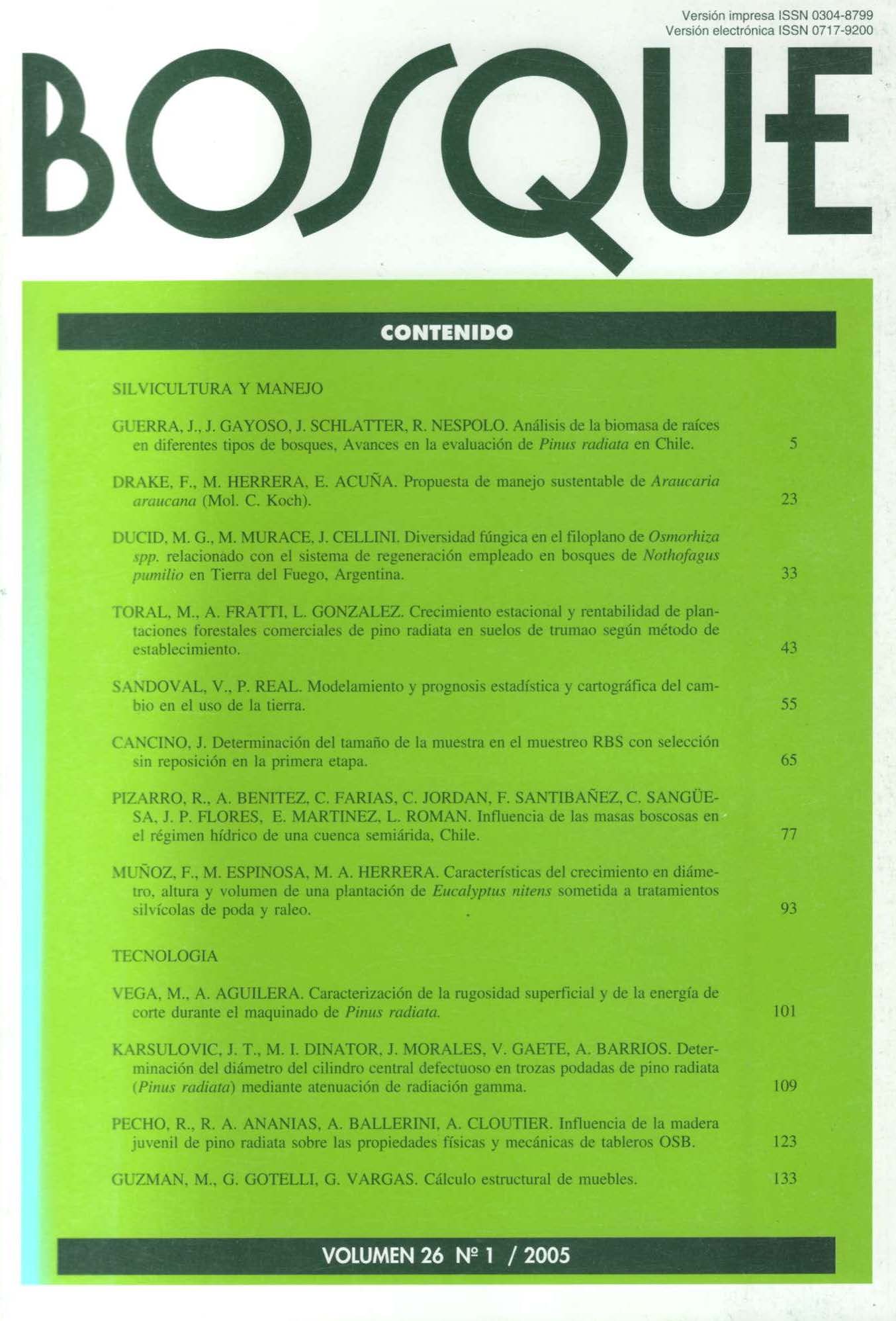Main Article Content
Apr 29, 2005
Abstract
The aim of this work was to determine the diversity of the Osmorhiza chilensis phylloplane fungus in two regeneration systems to establish which of has the least impact on the diversity in a Nothofagus pumilio virgin forest in Tierra del Fuego. Forest management affects the biodiversity and equilibrium of the original system, altering different communities as, for instance, the one constituted by the phylloplane microflora. These changes were studied in two regeneration systems, shelterwood cut (CP) and clear cut (TR), against virgin forest (BV) as a standard. Leaves of O. chilensis were processed in a laboratory to isolate and identify fungi species. The parameters evaluated were the abundance, richness, and diversity indices. The Beta diversity indices showed that the communities that differed most were BV and TR and the most similar were BV and CP, which demonstrates that CP has the least impact on diversity. TR proved to be the most aggressive treatment, as it produced the maximum variation in relation to the type and number of species, which might be related to the loss of the entire protective cover.


